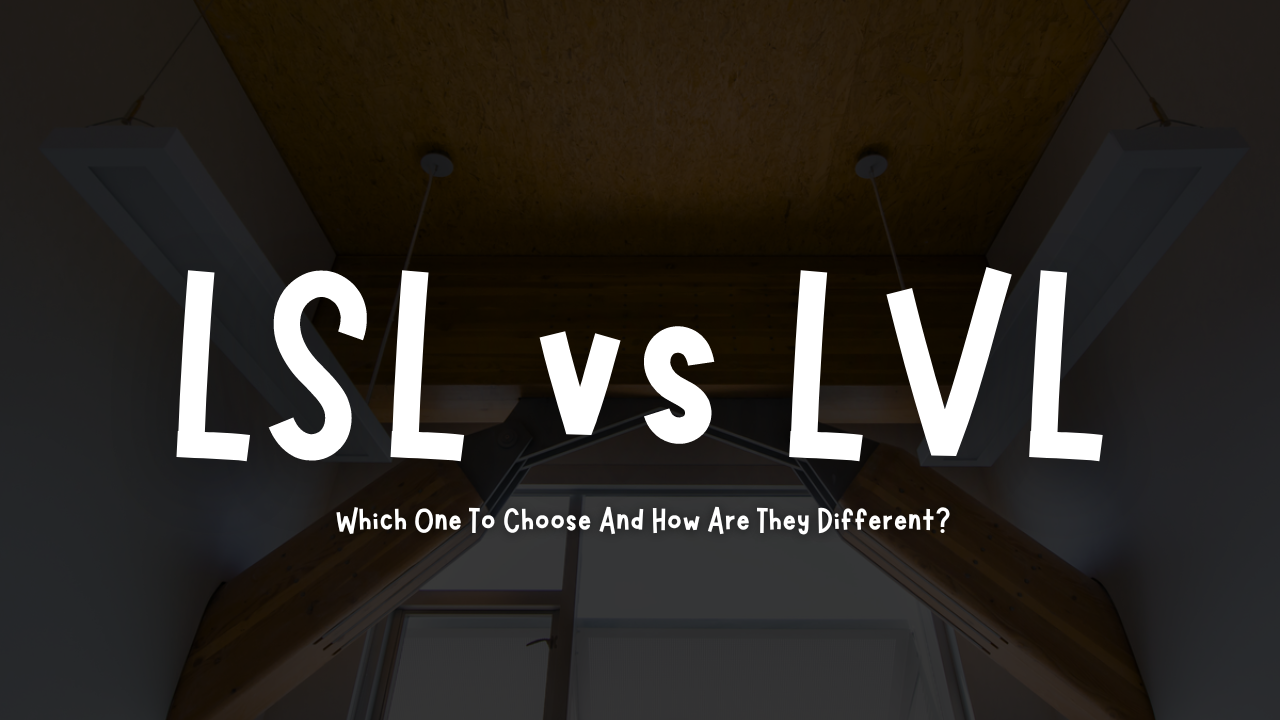So here we are again to help you with your confusion by comparing two different types of engineered lumber. LSL vs LVL! As we always say there is no bad timber if you understand your requirements clearly you can easily choose what’s most suitable for your project.
To make a choice or to understand if LSL is better for your work or LVL, it is important to understand the advantages that both these lumbers provide and then compare them with your construction needs this way you can make an informed decision with satisfactory breath.
LSL vs LVL: Understanding the Timber
LSL and LVL belong to the same family product of Structured Composite Lumber where the lumber is engineered with flakes, strands or veneers. One more product to this family is PSL. Check out our article on PSL vs LVL.
LSL (Laminated Strand Lumber)
LSL is made from dried and graded strands of wood which are layered upon one another and bonded together with moisture resistant adhesive into large blocks. These blocks are called billets, which are later on cut into different sizes.
Although, it lacks a common standard of production and design dimensions. LSL is similar to LVL but with an exception of using flakes and not layers of veneers, using steam injection press and by adhesives (isocyanate) these flakes are bonded together.
LVL (Laminated Veneer Lumber)
LVL is made from thinly sliced veneers bound together, typically in the same direction under heat and pressure, this process is particularly used to narrow the dimensions of billets.
Phenol-formaldehyde resins are used to create water proof bonds. You will find a varied range of products in LVL, like Douglas-fir, pine and larch, these produce lumber surpassing the traditional lumber lengths. This gives LVL an unmatched strength but also the process makes it comparatively more expensive than LSL.
What is LSL and LVL Used For?
LSL is commonly used in residential, commercial, and industrial construction for the purpose of structural framing. This is suitable for creating beams and headers, tall studs, rim board, sill plates and window framing. You don’t also have to worry if it is exposed as to flaunt your architecture plan.
LVL is more common in making trusses, planks, and rafters, but it is also used for beams like LSL. However, in a cross bonded fashion it creates an increased stiffness and thus walls can be raised using LVL. Also, it is used for making floor panels. As it holds load bearing capacity.
LSL vs LVL: Resistance Against Fire
Both these lumbers are safe to be exposed in compliance with building codes. As mass timbers both these have a natural resistance towards fire, as its char. The char present outside forms a protective layer without losing the strength inside and thus it creates an impressive resistance against fire. What happens is, due to this it will buy you enough time to evacuate the building in case of any fire event. You can check more about this in here rigorous fire testing in Canada and around the world.
LSL VS LVL: Safety from Rotting and Molds
These Lumbers can be great options as they don’t mold or rot when designed and installed in the right way. Although exposure to moisture must be avoided during and after construction. And if you make sure the ends and edges are sealed it will ensure a good resistance against moisture penetration. Moreover, you should practice the best measures to protect your wood construction against water damages, this will give a really long life to your wood and protect the lumber from damages and decaying over the period.
Also Read:
I hope the article has removed all your doubts and helped you understand better about the wood you want to use. Thanks for being our faithful readers😚

